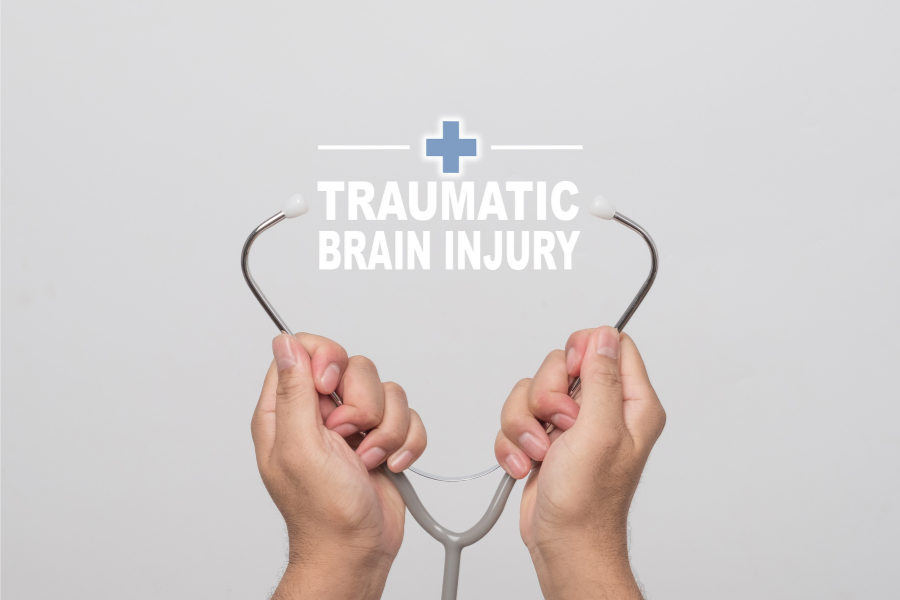Brain Injuries Awareness recognizes the month of March as an important time to bring attention to the prevention of traumatic brain injury. It’s also an opportunity to promote strategies that improve the quality of life for people living with TBI.
According to the CDC, there were over 2 million emergency department visits, 280,000 hospitalizations, and 50,000 deaths due to traumatic brain injuries in 2019.”What is a Traumatic Brain Injury?
 Traumatic brain injury is a disruption to the normal function of the brain. It can be caused by everything from a jolt to the head to a penetrating head injury.
Traumatic brain injury is a disruption to the normal function of the brain. It can be caused by everything from a jolt to the head to a penetrating head injury.
Traumatic brain injuries are caused by an impact on the head and affect millions of Americans every year.
Falls are the leading cause of TBI and the elderly are at a much greater risk. In fact, the largest increase in fall-related TBI deaths occurred to people 75+ years.
According to a recent CDC report, there was a 17% increase in fall-related TBI deaths from 2008-2017 and that was mostly older adults and younger children.
For over 30 years, the Brain Injury Association of America has raised consciousness by promoting March as a time of prevention and reflection.
By engaging the public and discussing facts like traumatic brain injury is a risk for everyone but especially older people and children.”What is the Severity of Different Brain Injuries?
Brain injuries are identified in 3 categories which are mild (most common), moderate, or severe concussions. The causes of injuries can be non-traumatic or traumatic.
A traumatic brain injury is a severe brain injury caused by an accident, fall, gunshot, etc.
A non-traumatic brain injury is from a deficit inside the brain like a stroke, cancer, or lack of oxygen.Emergency Room doctors are the best resource for giving an immediate diagnosis for head injuries because time is of the essence for treatment options.
injuries because time is of the essence for treatment options.
Reducing the risk of long-term consequences that often result from brain trauma is the main goal in the ER and will lead the way to optimal recovery.
Headache
If a headache gets worse and does not go away call your doctor or go to the emergency room immediately.
Pupils Dilated
If the black part of the eye is larger than the others then check yourself out for a brain injury.
Weakness
If you experience weakness, decreased coordination, or numbness you may have experienced a traumatic brain injury.
Slurred Speech
If your speech is slurred and you feel like you are having trouble communicating then seek help immediately.
Lethargy
If you or your loved one just cannot wake up or blackout then seek medical attention.
Convulsions or Seizures
If you or your loved one is having seizures or convulsing then get help immediately.
Memory Loss
If you cannot recognize people, places, or things then you may have a brain injury.
Confused or Restless
If you seem agitated or confused after a recent fall then get help immediately.
Unusual Behavior
Strange behavior after an accident may not be noticed right away but may develop in the months after.
Lingering symptoms can interfere with the quality of life after a traumatic brain injury.
A traumatic brain injury needs a continuum of care provided by an interdisciplinary team.
Patients who sustain brain injuries are the most important members of the team.
Their goals and backgrounds should always be incorporated into the treatment plan.
A traumatic brain injury needs a continuum of care provided by an interdisciplinary team.
Patients who sustain brain injuries are the most important members of the team.
Their goals and backgrounds should always be incorporated into the treatment plan.
Image Courtesy of bia.org
The diagram above depicts brain injury treatment in an orderly progression from trauma care to community integration.
People who incur brain injuries can enter, exit, and re-enter treatment at any point along the continuum.
Treatments should be continuous throughout the individual’s plan for recovery.



